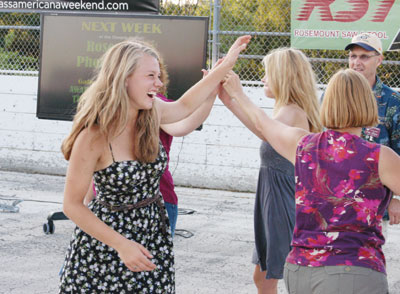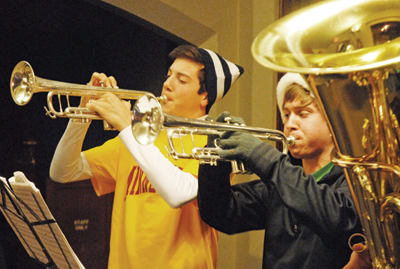by Tad Johnson
Sun Thisweek-Dakota County Tribune
Aug. 15, 2015
Money magazine has determined what Rosemount residents say they already know.
The town is a great place to live and raise children.
Rosemount ranked 12th in the “Best Places to Live 2015” list among the 3,625 U.S. towns with populations of 10,000 to 50,000 that were judged using statistics, a site visit and interviews with residents.
It wasn’t the highest mark the magazine gave to the community. Rosemount ranked fourth on the “Best Places to be a Kid” list. Only five towns are noted on the Kid ranking.
The ratings might be best summed up by MaryJane Schneider, whose family moved to Rosemount when she was 4. She moved away after graduating from Rosemount High School, but now she’s back in town.
“I love Rosemount, it’s simply home,” she said. “The schools do an outstanding job finding the right teachers, I know my kids are getting a fabulous education. I also trust that my kids are safe and have plenty to do as there are a great variety of community activities and programs offered.”
Education and safety were two of the criteria that Money valued highly.

Rosemount Leprechaun Days’ Big Wheel races, which are organized by the Rosemount American Legion. (File photo)
Rosemount Mayor Bill Droste noted those criteria first when he was asked about the Money ranking.
“Two important elements of growing communities are schools and public safety,” Droste said. “We are fortunate to live in an area with great schools both public and private.”
He noted the Rosemount-Apple Valley-Eagan School District’s numerous state and nationally recognized programs, such as the nine-time consecutive state championship Rosemount High School marching band.
“Outside of schools, we have engaged parents who volunteer thousands of hours organizing programs for our youth,” he said.
As for safety, the mayor has high praise for those who create that atmosphere.
“When considering communities to raise children, public safety is primary concern for young families,” he said. “Building connected neighborhoods with great parks and youth facilities are areas we have focused on for many years. We also have wonderful police, fire, parks and public works employees, who are engaged every day in providing a safe place to raise children.”
Data drove the majority of the whittling done to the list.
The first hoop was Rosemount being a strong retirement community, having a moderate median income (not too low or high), diversity and education scores.
The next step was affirming Rosemount was affordable for families, had strong job growth, ease of living, economic opportunity and was safe.
When Rosemount was among the final 280, Money factored in more data on health, taxes, real estate, culture, and the economy.
Money limited the results to three places per state, one per county, and aimed to represent all regions evenly.
Rosemount was among the 44 communities that were visited by Money staff to interview residents, assess traffic, parks, and gathering places and consider intangibles like community spirit.
A review of the numbers show Rosemount residents have a better tax value among the other cities. Only two that ranked ahead of Rosemount have a lower property tax rate. Rosemount’s $2,930 property tax was lower than that of No. 7 Chanhassen ($4,666) and No. 15 Edina ($4,880).
Rosemount’s job growth was projected at 6 percent, which was less than both of the other Minnesota cities on the list, but editors noted the arrival of Sweet Harvest Foods as a positive. Institutions like Flint Hills Resources refinery, the Rosemount-Apple Valley-Eagan School District and Dakota County Technical College continue to be mainstays of employment for Rosemount.
The short description about Rosemount noted its affordable homes and small-town vibe.
It also noted 10-day Rosemount Leprechaun Days festival, which more than 75 percent of residents in a city survey said they participate in each year.
It also gave credit to Rosemount for having a downtown with locally-owned businesses like Morning Glory’s Cafe & Bakery.
Steve Ball, the Leprechaun Days Committee president, said he liked that Rosemount still had a Main Street feel with small businesses downtown.
Money does seem to like Dakota County’s cities in recent years. Apple Valley was 17th in 2013. Eagan was 11th in 2014. Apple Valley did not appear to be rated in this survey and Eagan’s population of 65,311 was too high to participate in the analysis.
More about the Money list is at http://time.com/money/3996519/best-places-to-live-2015-map.
To contribute what you like about Rosemount use the Twitter hashtag #RSMTMNBestPlace.
Email Tad Johnson at tad.johnson@ecm-inc.com. Follow the Rosemount Twitter feed @editorTJ.














